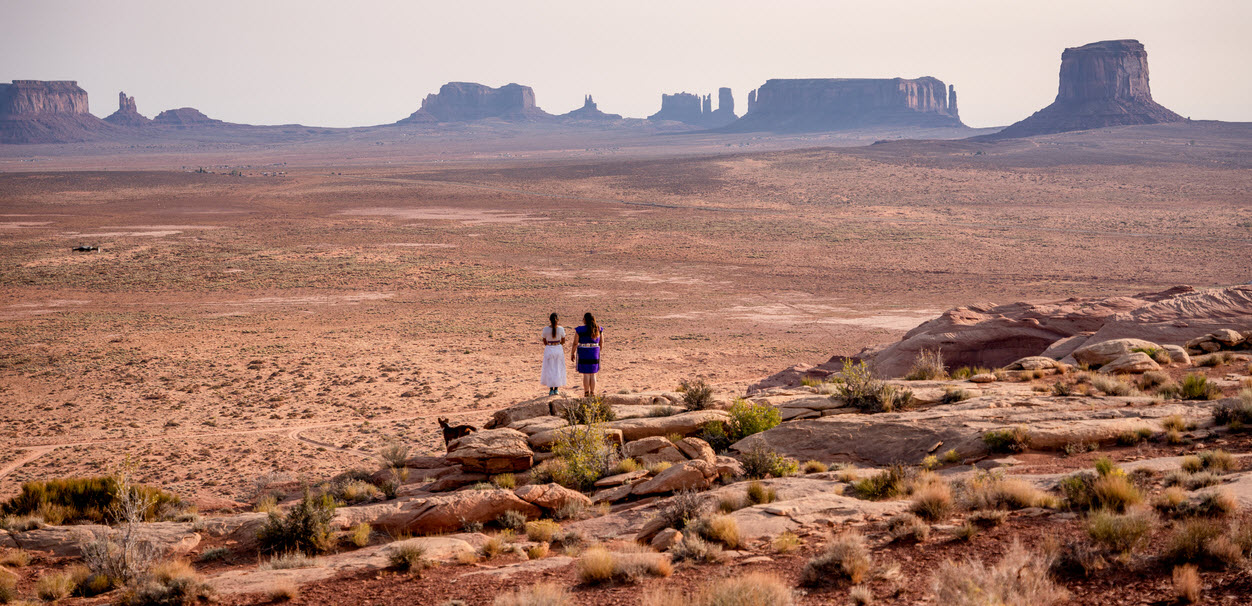| By Gale Staff |
A new portal on the Bureau of Indian Affairs (BIA) in Gale In Context: Opposing Viewpoints discusses the history of a government entity that for more than 150 years enacted some of the most harmful policies applied to Indigenous populations in the United States. In the twenty-first century, the BIA works with tribal governments to provide services and manage natural resources, particularly public lands. The BIA is a part of the U.S. Department of the Interior (DOI).
The head of the DOI is a cabinet-level position. Since 2021, it has been led by Deb Haaland, the first Indigenous woman to lead a federal department as a cabinet secretary. Haaland brings an important perspective to the role. Haaland, a member of the Laguna Pueblo of New Mexico, traces her roots back 35 generations. She received her nomination from President Joe Biden. In 2018, she became one of the first two Native American women elected to Congress. She served as a Democratic congresswoman representing New Mexico in the House of Representatives prior to her appointment to the DOI.
To understand the significance of Haaland’s success as a lawmaker and her historic appointment, one needs to look at the history of the BIA, which has served as the liaison between Native American tribes and the federal government since 1824, predating the DOI, which was established in 1849. First created to oversee the trade of goods for land via a series of treaties with various tribal governments, many of which were ultimately broken, the BIA has played different roles throughout history. Its practices have included the forced removal of Native Americans from their traditional homelands and the deliberate erasure of Native American cultures. However, since the 1968 Indian Civil Rights Act, the agency has been evolving.
With Haaland’s appointment, Native Americans hope that there will be additional positive changes that prioritize the voices of Native Americans, particularly in relation to land and water conservation; climate and environmental issues; and historical inequities in Native American education, housing, and economic development. The Haaland administration has engaged tribal leaders, met with delegations from tribes across the country, and helped direct investment and federal funds toward tribal projects. Haaland cochairs the first White House Council on Native American Affairs (WHCNAA), an advisory council created in 2021 to improve communication and collaboration between Native Americans and the executive branch of the federal government.
During her first month in the position, Haaland demonstrated her administration’s commitment to combating the climate crisis by issuing secretarial orders that revoked 12 policies that many considered environmentally damaging that were enacted during the previous presidential administration. She also issued an order creating a departmental Climate Task Force to coordinate efforts and provide guidance for agencies across the DOI. The order mandated that policy makers incorporate climate science into decision-making and make the department’s decision-making process more transparent. These efforts represent part of a larger effort by the Biden administration to coordinate federal agencies in the pursuit of achieving a zero-emissions economy by 2050.
Several policies and programs implemented under Haaland have sought to address long-neglected concerns and unresolved historical wrongs. Shortly after taking office, Haaland established a special unit to address unsolved cases related to missing and murdered Indigenous women. The unit aims to improve the tracking and prosecution of these cases as well as information sharing between law enforcement agencies. The DOI also launched the Federal Indian Boarding School Initiative to investigate the legacy of mistreatment experienced by Native American children at federally funded boarding schools. Under the authority of the 1819 Civilization Fund Act, the BIA oversaw the funding and operation of such schools, where the mission to assimilate Native American children and make them abandon their traditions often involved physical and mental abuse. The DOI has also designated the term “squaw” as a racist and sexist slur, and advised that it be removed from the names of over 600 geographical features. These name changes are part of a push across the country to build a stronger nation by confronting painful history and including perspectives that have long gone unheard.
Within Gale In Context: Opposing Viewpoints, students can learn about various branches of government and federal agencies, including how these agencies operate and how their policies affect people’s lives. In addition to the BIA, the DOI includes agencies that monitor endangered species, manage conservation efforts, and protect the country’s water resources.



